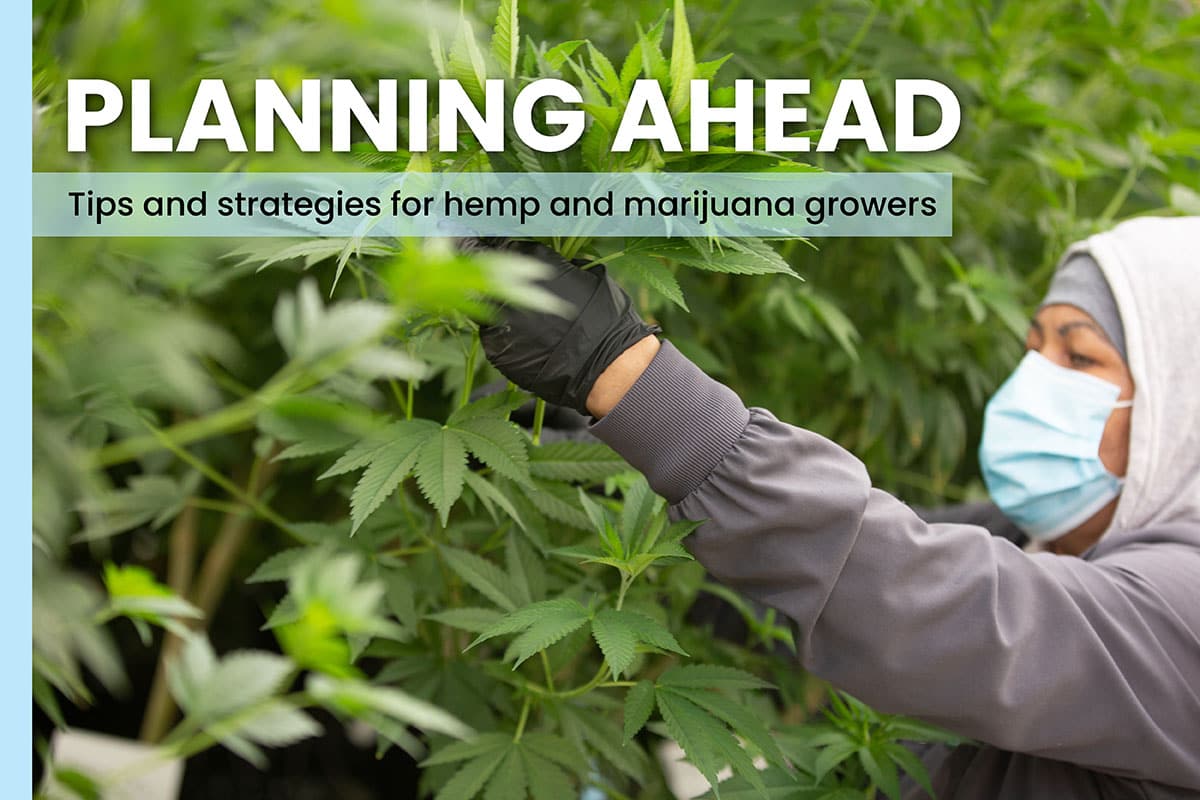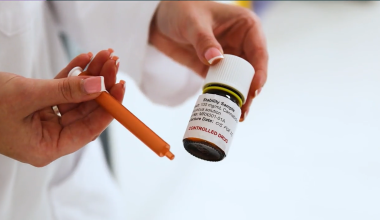(This is the first of a series focused on cultivation practices for hemp and marijuana growers. Look for additional stories on handling young plants, stocking up on supplies, fertigation and other topics throughout the year.)
Outdoor hemp and marijuana growers are getting ready to get their crops in the ground in the coming weeks, but before they sow seeds or plant clones or seedlings, it’s important to get a good start with proper soil testing, conditioning and preparation.
Crop yield and performance is impacted by field selection and soil preparation, making where and how cultivators grow just as important as what they grow.
And generally, because marijuana and hemp crops are such similar crops, the same soil health practices work for both.
“I think the difference in THC and hemp when it comes to production and soil prep is really the market value,” said Skip Newcomb, farm director at East Fork Cultivars in Takilma, Oregon, a producer that grows both hemp and lower-THC marijuana for CBD production.
“That’s the big difference for us is, we put more into it, knowing that we’re going to get that out of it, but essentially it’s the same exact plant – it grows the same, it looks the same, although I would say THC genetics sometimes do have a little more vigor.”
Soil type
Growers – especially those who produce other crops – may be tempted to pick their worst field to produce hemp or marijuana, because they may consider it risky crop.
But choosing a flat field is key to good yield at harvest, especially if mechanical harvesters will need to navigate that terrain, said Eric Singular, director of development and communications with International Hemp, a hemp genetics company in Denver.
Young plants need enough moisture when they’re first planted to ensure that seeds can germinate and emerge – but once crops are established, too much moisture can be detrimental.
Cannabis doesn’t like “wet feet,” which is to say it doesn’t like to sit in water, so one of the first things growers need to assess is their soil type in the field and the drainage situation.
Ideally, growers will have porous, loamy soil, but hemp and marijuana can grow in any type of soil, as long as it has proper drainage, according to Scott Propheter, a farmer and CBD executive in North Carolina.
“I’ve seen fantastic crops grown on straight red clay. I’ve seen fantastic crops grown on extremely sandy soils. But I think the basic principle that that applies across all of them is, they were well-drained fields,” Propheter said.
Testing, testing
The first step growers need to take to get ready for growing season is order soil tests, which can reveal information such as soil alkalinity, nutritional imbalances and contaminants like heavy metals and pesticides.
Many growers test soils after crops are harvested in the fall, so they can take steps to add any necessary amendments or plant cover crops before the winter, according to Singular.
Late winter to early spring, when fields are staring to dry out, is also a good time to test soil. But be sure to account for enough time to order soil amendments and have them delivered, as this can take some time depending on the location of the grow.
According to Singular, test fields in the spring when the temperature is around 40 degrees Fahrenheit to determine soil temperature.
In southern regions of the U.S., some hemp growers learned the hard way in 2020 that direct sowing seeds in the ground when the soil temperature is 80 to 90 degrees Fahrenheit means that the seeds won’t germinate, “because the seeds just bake in the ground,” Singular says.
Testing for contaminants such as residual pesticides and heavy metals is important for flower, biomass and grain crops – especially for growers pursuing U.S. Department of Agriculture organic certification for hemp or a comparable local certification for marijuana – although some states don’t require it, even though they test crops for contaminants after harvest, said Newcomb.
Noel Garcia, chief operating officer and head crop production consultant with TPS Lab in Edinburg, Texas, said he advises growers to test for heavy metals before they plant anywhere.
“I can’t stress enough how important a soil test is,” Garcia said.
“Hemp is a huge bio-accumulator, meaning it accumulates heavy metals, and a lot of times people would totally disregard that before they even considerate planting or even worse before they even consider buying a piece of property.”
He said there are some areas in Texas and other parts of the country that have high levels of arsenic or cadmium; growers may not realize that until they harvest and try to sell.
“Then the processor will send a sample to the lab and test for heavy metals … and come to find out you’re very high in arsenic and cadmium, and now you lost your entire crop, and you won’t be able to sell it.”
Weed-free fields
Planting in “clean” fields is another key success strategy, though there are few herbicides, if any, that are registered for use on hemp through the U.S. Environmental Protection Agency – and none cleared for use on marijuana crops – so growers don’t have the option to “burn down” weeds with chemicals, like farmers do before planting traditional crops, to ensure a clean field before planting.
Growers can naturally mitigate weeds by planting as early as possible, to let the plants get established before weeds start growing.
“As soon as the soil temperatures get warm, if weeds are growing in the field, that means the crop could be growing in the field,” Singular said.
“If you’re getting in the ground right when those soil temperatures are starting to go north of 40 degrees, you’re going to beat the weeds, and that is by far the most environmentally friendly way to manage your weeds, just getting in early and getting that canopy established,” Singular said.
For grain and fiber hemp varieties, growers can also try planting 5 to 10 more pounds of seed per acre than they need to cut out room for the weeds to grow.
Laura Drotleff can be reached at [email protected]
Medical Disclaimer:
The information provided in these blog posts is intended for general informational and educational purposes only. It is not a substitute for professional medical advice, diagnosis, or treatment. Always seek the advice of your physician or other qualified healthcare provider with any questions you may have regarding a medical condition. The use of any information provided in these blog posts is solely at your own risk. The authors and the website do not recommend or endorse any specific products, treatments, or procedures mentioned. Reliance on any information in these blog posts is solely at your own discretion.






